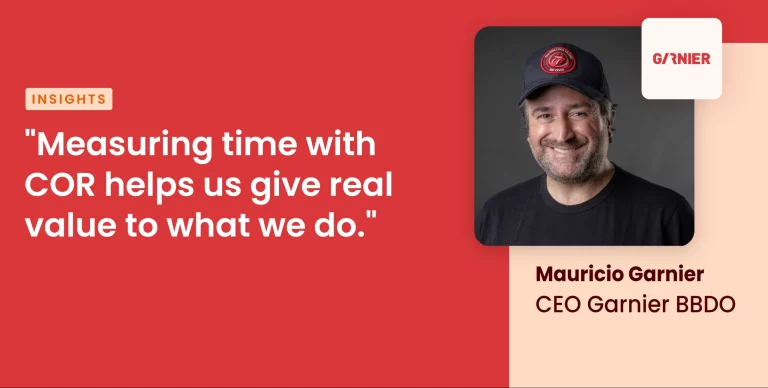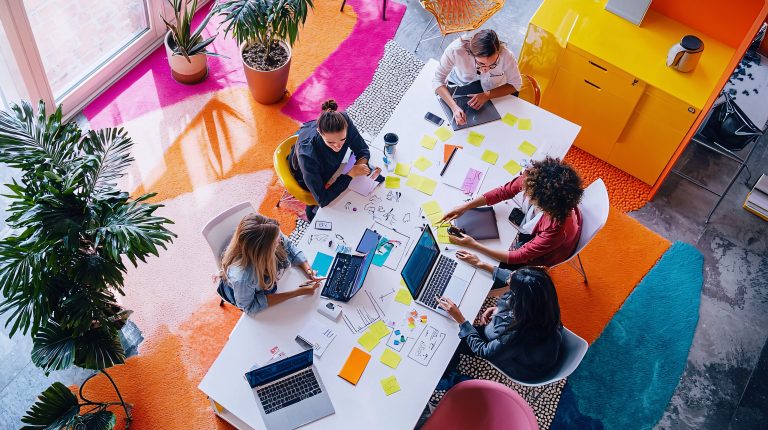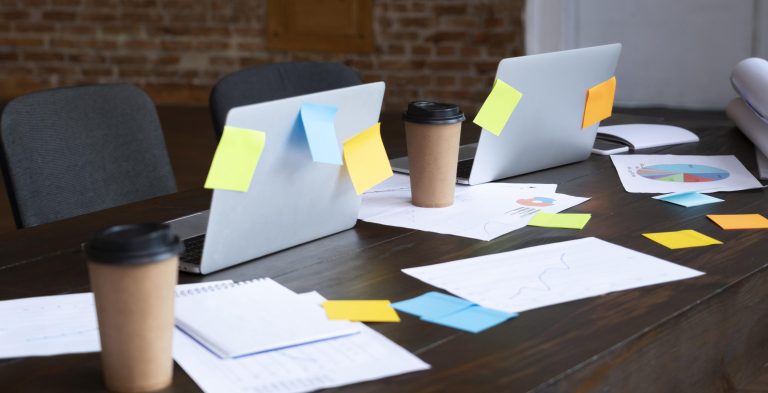Why do you need to be updated with these graphic design trends?
The graphic design trends we are about to see will have an enormous influence on the next years to come. The pandemic opened the room for new ways of visual communication, and we can’t underestimate the power and effect it will have in multiple corners of the graphic industry for its future. But why is this past year so important? We are seeing a complex matrix of intercrossed and intertwined affairs: social and politically charged stress, fake news, climate crisis, advances in technology that can open new frontiers, and the increasing rise of digital content demands as well as greater importance for social media platforms.
The social struggles and issues we have witnessed in the last years carry a transformative landscape to how, why, and what is informed and conveyed in graphic ways. The corporate world and market is not naive, and knows these ideas trickle down and must be incorporated in their missions and branding to maintain an effective communication line with its customers and employees. Let’s see some of our top graphic design trends for this coming year.
1. Inclusive and accessible representation
The horizontalization of media and social networks in recent years has in turn shifted the nature of narratives to become more diverse and inclusive. And this is of course reflected in marketing, branding, and advertising products and pieces. The increased focus on equity and diversity has been featured more than ever before in digital assets. An illustration of a crowd, using a simple example, is now usually filled with a plurality of skin tones, different physical capabilities, and attributes. That’s great! But there are still some ways to go.
Graphic design is also shifting to more accessible systems of communication: contrast, readability, illustrative options that are intuitive for more people. A truly smart and well-executed piece of graphic design could be a public service announcement that transcends language barriers and is welcoming for everyone regardless of their physical abilities. Or a web design, with efficient user experience, that can deliver an effective landing page that is intuitive even for people who are not well versed in using the internet. Design is a different discipline than fine arts in many ways, but an important part of that distinction is the overall goal of delivering a crystal clear message in a smart way.
After the effects of the pandemic and the visceral need for clear statements and intuitive design companies, state entities, and brands started to feel the need to include data, facts, and statistics in their messages to the public. The public demands responsibility and accountability in what they see. And some of these trends show these ideas will only become more predominant.
2. Maximalism
Maximalism is, at its core, a response to minimalism. It implies using loads of textures, colors, tones, objects, and shapes. With how much brands and content need to fight to entice and keep our collective attention in social media, now it is more of a response to our dwindling digital attention span. This is not an attack on our capabilities, but the truth is that social media in particular bombards us with constant information. And maximalism can sometimes break through the noise and captivate our eyes. It is loud, dramatic, and expressive. It’s sort of simplistic in its excessiveness: vibrant colors, bold combinations and combos, convoluted fonts, rich textures, and weird patterns. This year expect some of the spaces in your screen to leave no room for white space.
3. Interesting data visualizations
Statistics, research results, effects per millions, chart and map comparisons. This year we saw many pieces of data visualization due to the pandemic. Some of them were very helpful, others only served to confuse even more. Data visualization is a way of presenting complex information or data in a graphic format. Like infographics, charts, diagrams, maps, graphs.
There are volumes of data that are hard to comprehend when taken out of context, sometimes our minds need visual aid in order to correctly understand complex and intertwined numbers and quantities. In social media campaigns, they are a popular way of driving engagement up while enriching a story. People also like to share pieces of content they find illuminating, another point for data visualization is its likeliness of going viral.
In 2022 we will see many original and interesting ways of sharing relevant information.
4. Bold backgrounds
Although muted and sober color palettes will still keep their role this year, there are new tendencies that are making room for bold explosions of color into typically serious palettes this 2022. An extremely loud and bold color background can still be a great fit even in more traditional industries, if well executed. Bright color blocks, walls of daring tones, vibrant and intrepid backgrounds are making a comeback. The icons and illustrations that accompany them are doing their part as well to keep a cheerful tone. And even it can create an interesting tension when paired with clean lines and fluid structures.
5. Colorful icons and illustrations
Last year, flat icons and simple lined illustrations were the trends. Brands and advertisers managed to use uncomplicated styles to create playful graphics and cleanly communicate their messages in a visually alluring way. They were great for capturing the attention of the public and highlighting the unique attributes of a brand.
But we are constantly gathering more influences, and Asian styles have really permeated the global attention, in media, in entertainment, in the music industry. The rich textures and unapologetic linework is mesmerizing, and it can be an incredible asset when it comes to storytelling. We will likely see a rise in Japanese-inspired illustrations and artwork, with bold outlines, a family of similar hues by piece, and grandiose facial expressions that allow for eye-catching brand identity.
6. 3D illustrations
While on the subject of illustrations, we have to include 3D media. Simple and flat design or 2D illustrations will still be an expected feature a lot in social media, at least for a long while. But more designers are starting to dip their toes in 3D illustrations and animation. Why is this happening now? We have better personal computers and more robust video cards that can sustain the required rendering and design software heavier than adobe, while still being somewhat affordable as a working tool.
This style has a greater deal of detail, dimension, and depth. It can even mix media and allows for the incorporation of flat illustrations in 3D designs. So, it can even be used by people who prefer a more traditional approach. This style can convey more realistic, true-to-life visuals that compel your audiences. And, for the daring, they can also create opposition of textures and tones that arise a rich and beautiful visual contradiction.
7. 90s Nostalgia
It seems we really enjoy the feeling of sharing a collective nostalgia. Maybe it is a millennial trait, maybe it reflects a societal yearning for simpler times. But one thing is for sure, there will be a 90s throwback. We are coming out of a steady and recent 80s retro indulgent style in the world of pop culture, and we are getting right back on the succeeding wave.
This is not necessarily surprising, with recent events regarding the music industry, the Britney Spears trial, binging old shows during covid isolation, reboots of classic TV shows, these are all concepts that trickle into our brains. And creatives are also permeable to such influences. For many, the elements that go into 90s aesthetics are extremely familiar, but we have a new generation that perceives them as brand new, and interesting conceptualization:
Grainy textures with explosive, and sometimes, crashing flamboyant color scheme. A lot of pinks. Simple shapes. Pixel art. We will experience some of this, and it will be interesting to see the manifestations of these choices intermixed with other trends that will arise.
8. Geometrical shapes
Last year we saw how huge geometrical patterns were in social media, it was one of the more popular graphic design trends, and it will probably continue this year as well. It isn’t surprising at all, patterns after all are a primordial design element of the design world. But they do grant a sense of cohesion and unified structure to media graphic posts and logo designs. They can enrich solid backgrounds and cut the stillness in some patterns and make them more interesting.
That being said, it is important to take care and put some thought behind every geometric shape choice. For example, squares bring a sense of stability and clear proportions, triangles are more fluid and give a feeling of motion. Parametric patterns will take the spotlight in 2022.
9. Text-heavy videos
Due to the pandemic, traditional video content makers had to figure out new ways to produce visual deliverables. Text-filled videos were a great alternative. Even after content creators are able to start working again, the trend is still popular. Many people choose to view their social media dashboard without sound when they are with other people, or if they don’t have headphones in public. Making text-heavy videos, or adding subs to tik-tok videos has become more of the norm. An added bonus of this trend? It is inclusive of the deaf and/or hard-of-hearing community.
It seems animated productions with textual lines will still be strong this coming year. Not only in viral video trends and challenges, but for scholastic endeavors, and product education. These videos can really ramp up engagements, it can include collaborations with users or informative ads from brands. And it is very easy to maintain a unified front, color palette, and voice-over while leaving enough room for uniqueness.
10. Art Deco makes a comeback
Our hunger for vintage design trends goes back more than a decade. The evocation of effective and interesting visual techniques is what brought Art deco for another round. With its smart and symmetrical geometry, it belongs in this year’s modern graphic design trends organically. It can work extremely well and even bring together some of the previous trends mentioned, using metallic shades, beautiful and complex illustrations, chromatic palettes, reflection, and glass plays.
Art Deco is a luxurious visual experience, every time you look at a big piece you can find something new and interesting to explore, you can pay attention to the lines, the decorative aspects, the layers upon layers of illustration, of psychedelic type fonts and transparencies. It can be extremely inviting in its complexity and fun opportunity for the team in charge of that design project to play with rare mediums. And it also allows for more minimalist work, being able to be used in branding and logo creation.
11. Soft Gradients
Last year’s muted colors were the boldly chosen palettes. This year this will continue with the addition of soft gradients. Think about mixing Wes Anderson’s color scheme with the progression of a sunset. There’s room for it in 2022’s social strategies. This is especially true with the rise of 90s nostalgia and maximalism, there’s space for more mellow visuals in between the loud places they will occupy.
Gradients usually employ colors that have a slight saturation of black, white, or any other complementary color. This is the reason they look softer and more organic while exuding calmness and bringing forth a feeling of nostalgia.
Envato, a leading marketplace for the creative assets mongering, the dreamlike soft gradients will be popular in 2022. It can work very organically with granular textures and soft pastels, creating digital assets that shine with elegance while allowing the eye to rest.
12. Typography
In 2022, we will have more experimental typography. We will likely see the incorporation of incongruous styles, structureless bubbles, fun elements, new colors, and mind-blowing shapes. In addition, it will be likely to see a merge between this trend and 3D illustration, creating unique and interesting pieces that balance on the edge of childishness.
It can be risky, these types of lettering can become unreadable or unclear. It takes expertise to break the molds and create something new that is well executed.
13. Special shout out to Serif fonts!
On the other hand, limited space to share a point of view means making sure you are able to communicate clearly without having the audience break a sweat trying to understand the meaning of a phrase. This is not synonymous with boring unpalatable fonts. On the contrary, space restrictions often pave the way for tension and intersecting lines. A good emplacement can make a phase look like a work of art. And serif fonts are as malleable and clear as they come. They allow for a versatile use within a branding strategy, permitting a great deal of play even when they could be simple in their original motif.
14. Quotes
Maybe screencaps or meme templates don’t really go with the identity of a certain brand. That’s ok, there’s still some room for play even in the most serious operations. It is possible to transform other types of messages into quotes, with beautiful, bold, and artistic typography. In this case, it is suggested that they retain the same identity as the other posts created by the brand, it is not necessary to reproduce the typical motivational quote style.
They can serve as a call to action, or even as a way of linking other types of media, like podcast episodes or seminars.
15. Minimalism with a dash of Brutalism
While we forecast there will be more maximalism in 2022, there’s still room for minimalism. A certain more updated style, with more color, and not only combinations of monochromatic color schemes with empty space. Designers have been pairing white space with bright colors to bring attention to specific features. Some tweaks to look forward to can be warm tones, nice organic textures, and softly created shadows.
Some of these minimalistic techniques may even be presented hand in hand with digital brutalism. Simple doodles, quirky collages, and cringe stock photos are more at home in the anti-design new trend. Digital brutalism is better palatable when accompanied by bolder lines, and the succession of dense and light typefaces. Think a little less Geisel Library, a little more early Instagram feed. Brutalism can be hard to comprehend, so it is rare to see a pure brutalist web design since it can be chaotic and plummet marketing leads.
How do you keep up with current trends?
Graphic design is an extremely pleasing form of communication when done right. It can transcend the borders of language and capabilities. It can arise the interest of multitudes and digital crowds. Graphic designers need to be at the top of their game in order to deliver problem-solving pieces that attract the attention of the audience. If you want to help your team create the best deliverables, they need to be well taken care of and managed. Check out how we can help you keep their health and productivity high and request a demo today!
















